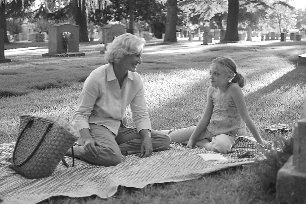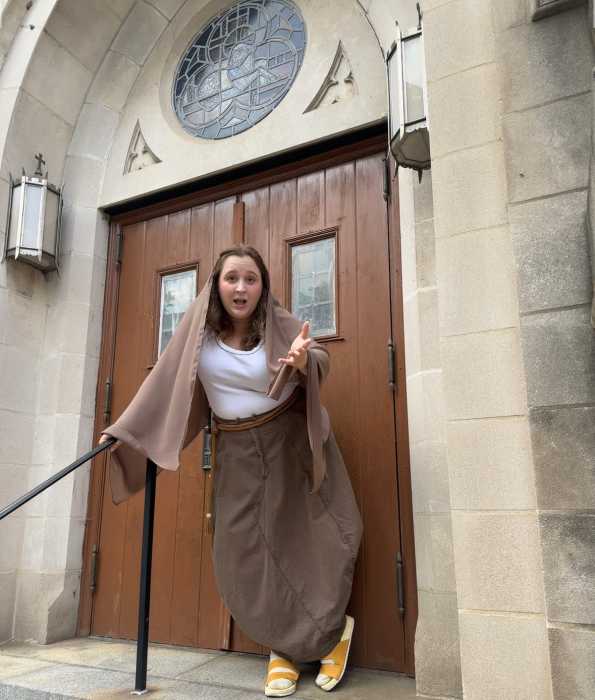Why independent cinema loves Rodrigo Garcia
Director Rodrigo Garcia brings to the big screen another of his trademark montage pieces, the star-studded release “Nine Lives.” In this film, Garcia, who made his reputation with “Things You Can Tell Just By Looking at Her,” and “Ten Tiny Love Stories,” has fashioned a collection of vignettes that capture a pivotal moment in the lives of nine women. Although the sketches seem at first unrelated, as the film progresses it becomes clear how each of these woman’s stories and lives are linked in some way.
Each vignette deals with fate, mistakes, near misses, and lost opportunities. Constructing “Nine Lives” as a series of short sequences allowed Garcia to enlist the talents of some of the best actors in the business. The cast includes Holly Hunter, Glenn Close, Dakota Fanning, Mary Kay Place, Aidan Quinn, and Sissy Spacek. He shot the entire film in just 17 days.
The film starts and ends with mothers who are kept from their daughters. In the first vignette, Sandra (Elpidia Carrillo) is a prisoner in the Los Angeles County Jail who can’t seem to win. She takes on double duty—kitchen detail and cleaning crew—but still receives threats from the guards and other prisoners. Just as the viewer is about to surrender to total sympathy, Garcia begins to reveal Sandra’s own shortcomings. When her daughter visits and their phone malfunctions, Sandra goes crazy. As the guards restrain her, she screams, “Nothing works in here!” It is cry that could be easily aimed at herself.
In the final vignette, Maggie (Close) is a woman who has allowed the death of her daughter, Maria (Fanning), to rule her life, existing in a limbo world of illusions fueled by alcohol. Both Maggie and Sandra are women separated from their child, who can no longer find a way to make their reality make sense.
Garcia’s characters are trapped by the past, like Holly (Lisa Gay Hamilton), who is immobilized by the scars of her childhood, and can’t go forward with her life until she returns to her family home to make some sort of peace. When she finally confronts her father, she pulls out a gun. But Garcia never reveals whether the resolution comes in the form of suicide or murder.
Diana (Robin Wright Penn) discovers her heart is tied to the past when she runs into her ex at a grocery store. Both have married and she is pregnant, but soon they are “walking and talking like lovebirds,” as Penn puts it, saying, “Five minutes with you and I feel like my life is a figment of my imagination.” “We’re Damian and Diana,” the ex (Jason Isaacs) replies. “We always will be.” The regrets lie heavily, even after the scene ends.
Holly Hunter’s Sonia finds the same trap in her current relationship. Hunter—who looks amazing in this vignette—plays a woman in love with Martin, a loveable but low-class man. But when Martin reveals to Sonia’s friends the truth about an unplanned pregnancy and abortion, their relationship changes irreparably. We see foreshadowing of this heavy secret and class issues at work when in the lobby of their friend’s tony new condo Sonia says, “You look like a thug,” and Martin retorts, “Not good enough for ya? Not the man you want for the father of your children?” Sonia falls mute, stroking the pillow on her lap.
Teenage Samantha (Amanda Seyfreid in a role drastically different from the space case she played in “Mean Girls”) exists as a bridge between her regretful mother, Ruth (Spacek), and her disabled father. She should be focusing on college, but instead employs her sass, brains, and attitude to keep her home life intact. Her cool façade surrenders to desperation and panic when she acknowledges her reality, but how can she think of leaving when her mother says things like, “You make this house make sense,” and her father lobs, “You are the heart of the house,” and “You are the golden child”?
The links between these two women appear only as they begin to surface in each other’s lives. In a scene in which Ruth is about to engage in some motel-room adultery, it is a young Samantha being hauled off by the police that snaps her back. Ruth’s potential partner, Henry (Aidan Quinn), is a blue-collar sage, sprouting wisdoms like “Connections. We make them, and we are made of them.”
Feline imagery runs throughout the film—in the cat held by Andrew’s (William Fichtner) dead wife in her funeral photo, in the nature program Henry puts on in the motel room, in the comments Camille (Kathy Baker), who has breast cancer, makes from her hospital bed, all hearkening back to Garcia’s title. In the final scene, the ghost of Maria asks of a cat prowling around her gravesite, “Do cats really have nine lives?” “No, honey. Only one,” replies her mother.
Garcia seems interested in characters who are aware of the singularity of their lives, yet trapped in cages of their own making—past and present relationships, their failing minds and bodies, the opportunities acknowledged and those that have been wasted.
In “Nine Lives,” Garcia allows us to peer into a cross section of these women’s realities. In doing so, he allows us to examine our own lives, look at our own failed relationships and lost opportunities. Perhaps, as teenaged Samantha says, the secret of the universe is that “we’re all cripples inside.” Or, maybe Camille has it figured out when she offers, “We’re just so lucky, to be a part of something.”
gaycitynews.com



































